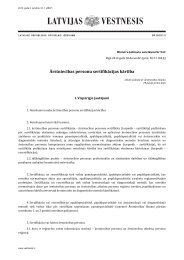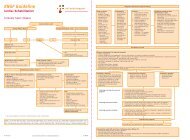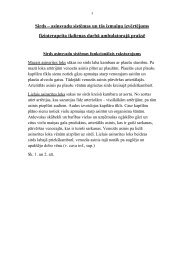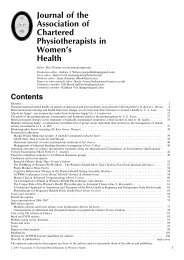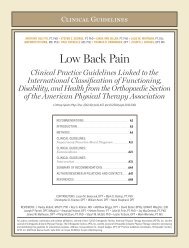KNGF Guideline Cardiac rehabilitation
KNGF Guideline Cardiac rehabilitation
KNGF Guideline Cardiac rehabilitation
Create successful ePaper yourself
Turn your PDF publications into a flip-book with our unique Google optimized e-Paper software.
<strong>KNGF</strong> Clinical Practice <strong>Guideline</strong> for physical therapy in patients undergoing cardiac <strong>rehabilitation</strong><br />
Supplements<br />
Supplement 2 Borg RPE scale for patients with coronary heart disease and chronic heart failure<br />
The Borg scale is a subjective measure of the patient’s level of exertion or their reaction to activities. 1,2 Patients can use the Borg scale to<br />
adjust their level of exertion during daily life activities to their limited physical abilities. 2,3 They learn to limit their exertion to a specified<br />
level during their daily life activities, e.g. during sports or games. 4<br />
Patients indicate on a scale from 6 to 20 the degree of fatigue and any dyspnea and / or angina they perceive at a particular level of exertion.<br />
The Borg scale level can be combined with pulse or heart rate measurements (resting, maximum and recovery rates) to give the patient<br />
feedback about normal or abnormal symptoms they may experience upon exertion. The Borg scale can also be used to enable patients<br />
to learn to listen to their own bodies, to monitor the exertion and spread it over the day, to evaluate the effects of exercise, to overcome<br />
their fear of exertion, to explore their physical limits, to increase their self-efficacy and finally to provide feedback to the physical therapist.<br />
Perceived exertion scale<br />
Scale<br />
15 points<br />
scale A<br />
15 points<br />
scale B<br />
6<br />
7<br />
8<br />
9<br />
10<br />
11<br />
12<br />
13<br />
14<br />
15<br />
16<br />
17<br />
18<br />
19<br />
20<br />
very, very light<br />
very light<br />
fairly light<br />
somewhat hard<br />
hard<br />
very hard<br />
very, very hard<br />
no perceived exertion at all<br />
extremely light<br />
very light<br />
light<br />
somewhat hard<br />
hard<br />
very hard<br />
extremely hard<br />
maximum exertion<br />
Source: Borg 2,3 and Pollock & Wilmore. 5 Table reproduced by kind permission<br />
of the original authors/publishers.<br />
References<br />
1. Chen MJ, Fan X, Moe ST. Criterion-related validity of the Borg ratings of perceived exertion scale in healthy individuals: a meta-analysis. J Sports Sci. 2002<br />
Nov;20(11):873-99.<br />
2. Borg G. Borg’s Perceived Exertion and Pain Scales. Champaign (IL): Human Kinetics; 1998.<br />
3. Borg GAV. Psychophysical bases of perceived exertion. Med Sci Sports Exerc. 1982;14(5):377-91.<br />
4. Jongert MWA, Bebedictus J, Dijkgraaf J, Oldhof J. Het gebruik van de Borgschaal bij bewegingsactiviteiten voor hartpatienten. Maarsen: Elsevier Gezondheidszorg;<br />
2004. (in Dutch)<br />
5. Pollock ML, Wilmore JH. Exercise in Health and Disease: Evaluation and prescription for Prevention and Rehabilitation. 2nd ed. 2009. Philadelphia: W.B.<br />
Saunders.<br />
V-08/2011<br />
27



